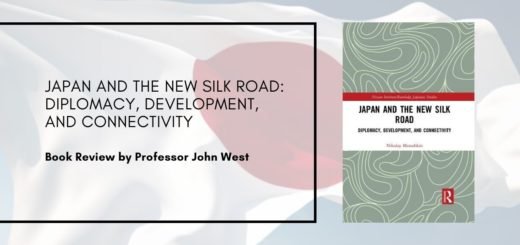In Europe’s Shadow: Two Cold Wars and a Thirty-Year Journey Through Romania and Beyond

In the wake of the revolutions of 1989 in Eastern Europe, the scholars were eagerly putting forward their commentaries on the political developments and prospects for these former communist countries. Amidst that scholarship, Robert D. Kaplan’s Balkan Ghosts became widely popular. However, despite giving a tour of the entire Balkan Peninsula in this book, it reflected that he surely had had many more insights to reveal, which he couldn’t due to the limited scope of that book. But thanks to his continued fascination with this region, he, besides explicating the gaps that Balkan Ghosts had left, give many new insights in his new book: In Europe’s Shadow: Two Cold Wars and a Thirty-Year Journey Through Romania and Beyond.
A well-noted regional geographer, foreign affairs analyst and a journalist, Kaplan is known for his geopolitical insights, which are backed by surprising shreds of evidence that reflect his gimlet-eyed realism. Highlighting the source of his wisdom in the introduction of this new book, he says that “to observe the world properly is a matter of deliberation and serious reading over decades in the fields of history, philosophy, and political science.” Moreover, he also gave distinctive emphasis to literature, architecture and art as the source for understanding a region.
As a young journalist, Kaplan visited Romania for the first time in the early 1970s. At that time, Romania was one of the darkest and backward corners of Europe, and hence journalists and academicians were rarely paying attention to it. But for Kaplan, the experiences during his first visit to Romania, translated into his lifelong obsession with this often-overlooked country. This Romanian obsession led him to plunge into the neighbouring Balkans to contemplate the historical complexities of the region.
In Europe’s Shadow, the author, by looking at various questions — related to geopolitics, imperialism, the Cold War, and International Relations, through the Romanian lens, weaves a highly informative fusion of history, politics and culture of this country. Besides, he also tries to locate Romania’s past, present and the future through the views of its local population.

Starting by contrasting Romania with sunny and vibrant Israel, where he used to live before arriving in Bucharest in 1981, the author describes this East European country as “a black-and-white engraving in the shivery, November-hued Balkans.” Reflecting on the miserable human conditions in this communist satellite, he adds that “the silence of the streets was devastating and the city had been reduced to a vast echo, with people standing in queues for bread in the extreme cold.”
On the political front, the author highlights how Romania gave rise to people like Ion Antonescu and the most despotic strain of Communism under Nicolae Ceaușescu. Writing about the surprising sight of “massed thousands marching in a parade for their dictator Nicolae Ceausescu, or listening to him speak for three hours,” the author recalls the faces in the audience who looked terrified and couldn’t dare stop clapping and chanting until Ceausescu would raise his arm. Moreover, he also branded Ceausescu along with Gheorghe Gheorghiu-Dej as “arguably two of the most ruthless men in the history of the second half of the 20th century Romania.”
Besides highlighting the country’s recurring “spiritual, military, and political domination by great powers,” the author also gave an overview of Romania’s history and geography. Tracing the tragic modern history of Romania, he highlights the tumultuous period of twentieth-century when the country suffered due to the “territorial dismemberment, monarchy, fascism, occupation, military dictatorship, and communism.”
While exploring the geographical location of Romania, Kaplan also highlighted the dependence of the country on Russian energy supplies. Moreover, by giving an overview of the resurgence of exclusivist nationalism in Russia under President Putin’s adventurous foreign policy, the author also anticipates the possibility of a “new Cold War” situation between Russia and its immediate neighbours.
Furthermore, despite finding contemporary Romania as a country that has rapidly transformed from the periphery to one of the famous traveller’ destinations shaped by western tastes, the author reflects that the last vestiges of Hitler and Stalin are not long gone yet. Recounting how people implored him to ensure that the West, particularly the US, takes care of Romania in the twenty-first century, the author also highlights how Romanians view Europe through different lenses instead of “one Europe into whose bosom Romania could escape history.”
Quoting Father Dosoftei, a monk from Putna commune of Romania, the author writes that “the Communists destroyed the landscape, but deep down they destroyed nothing,” and hence “it is only a matter of recovering the tradition. Tradition and modernity cannot exist one without the other. You can only build from the past.” Therefore Kaplan’s central premise in this book that Romania, while envisioning its future, needs to rediscover its past.
Besides being a fascinating story of the geographical, historical, and ideological frontier, In Europe’s Shadow, truly helps to understand many of the contemporary dilemmas that Europe faces.


















